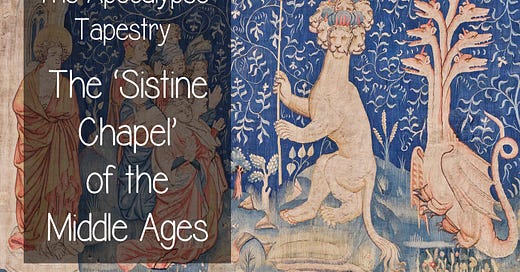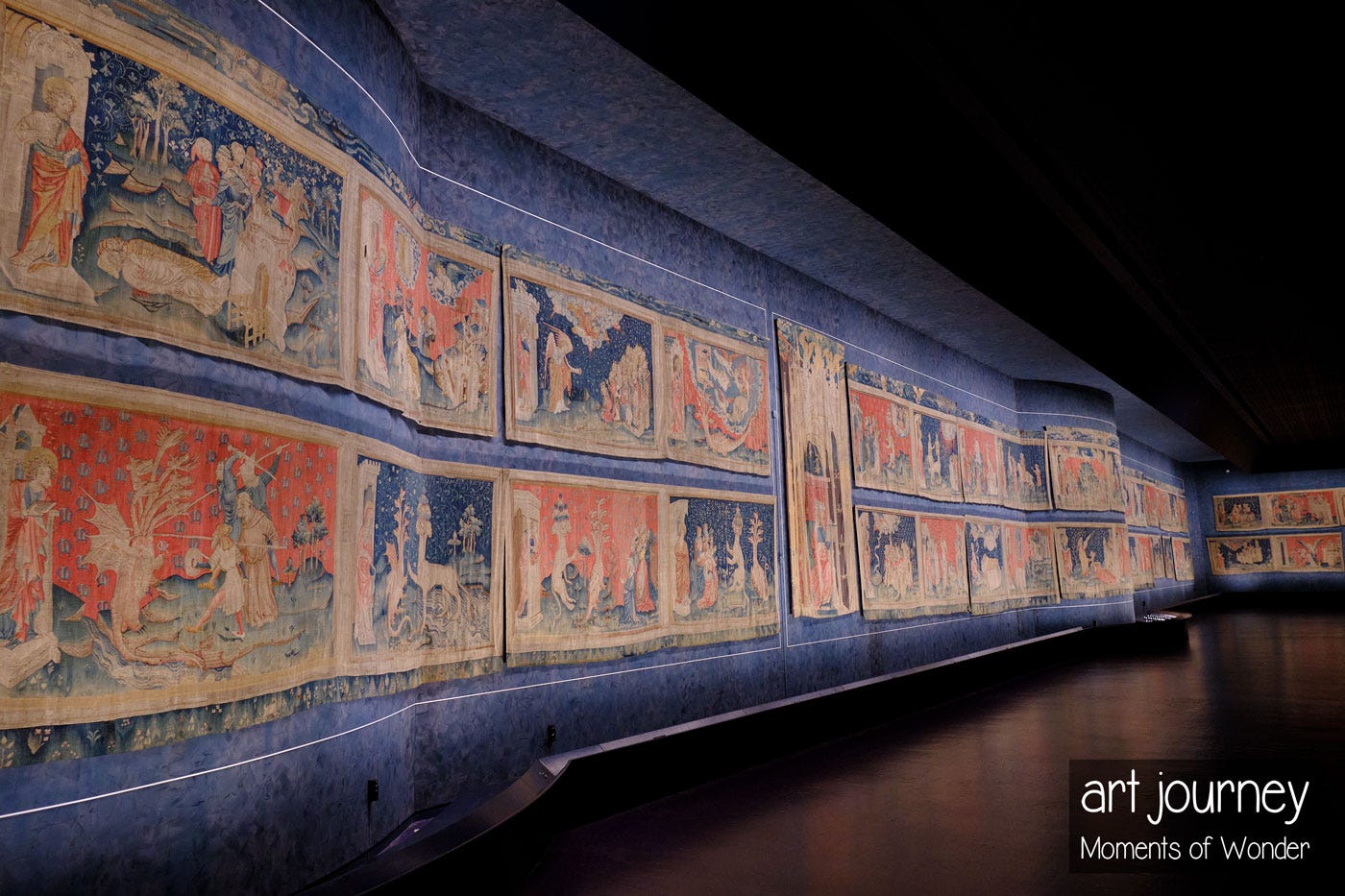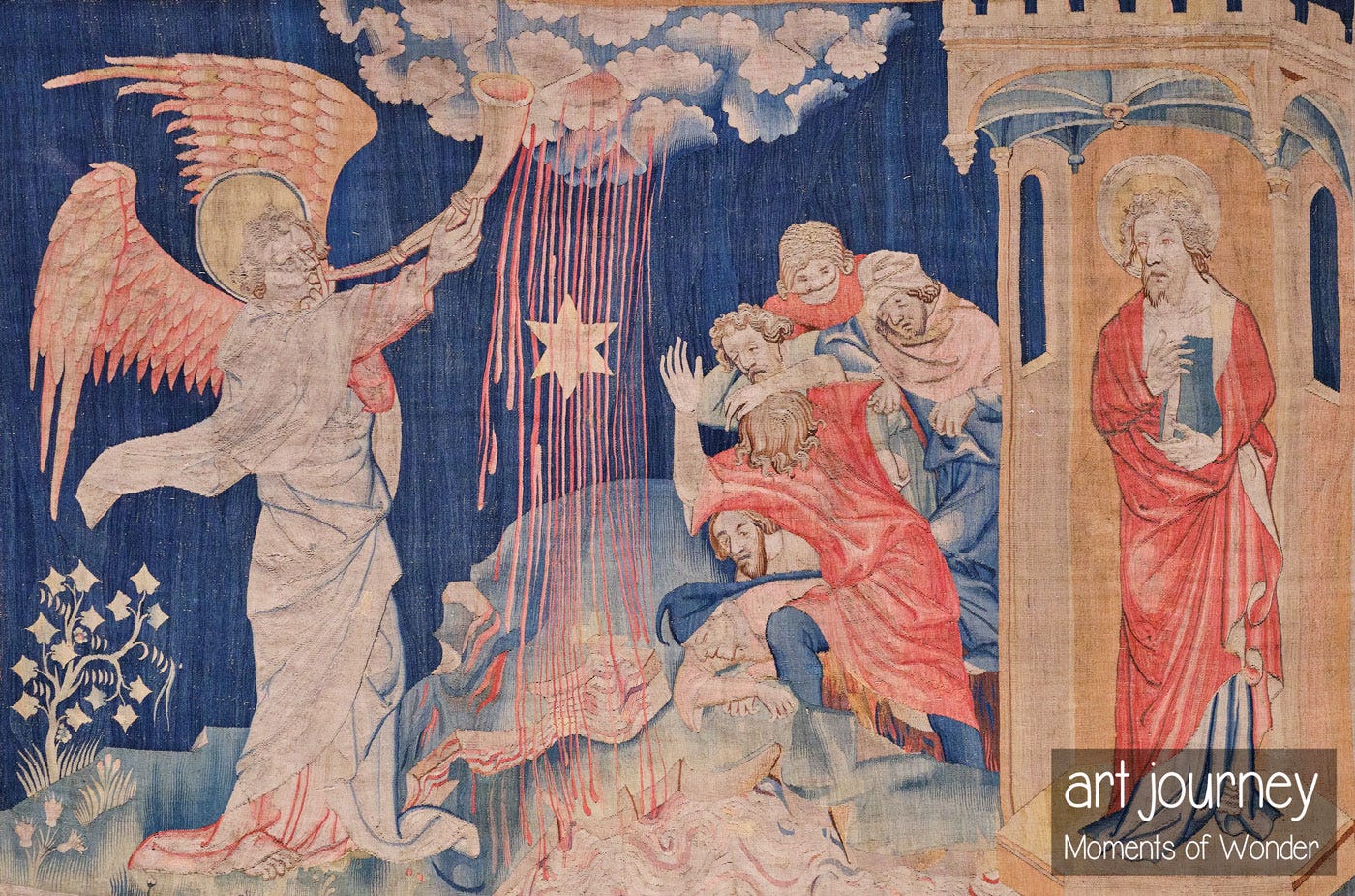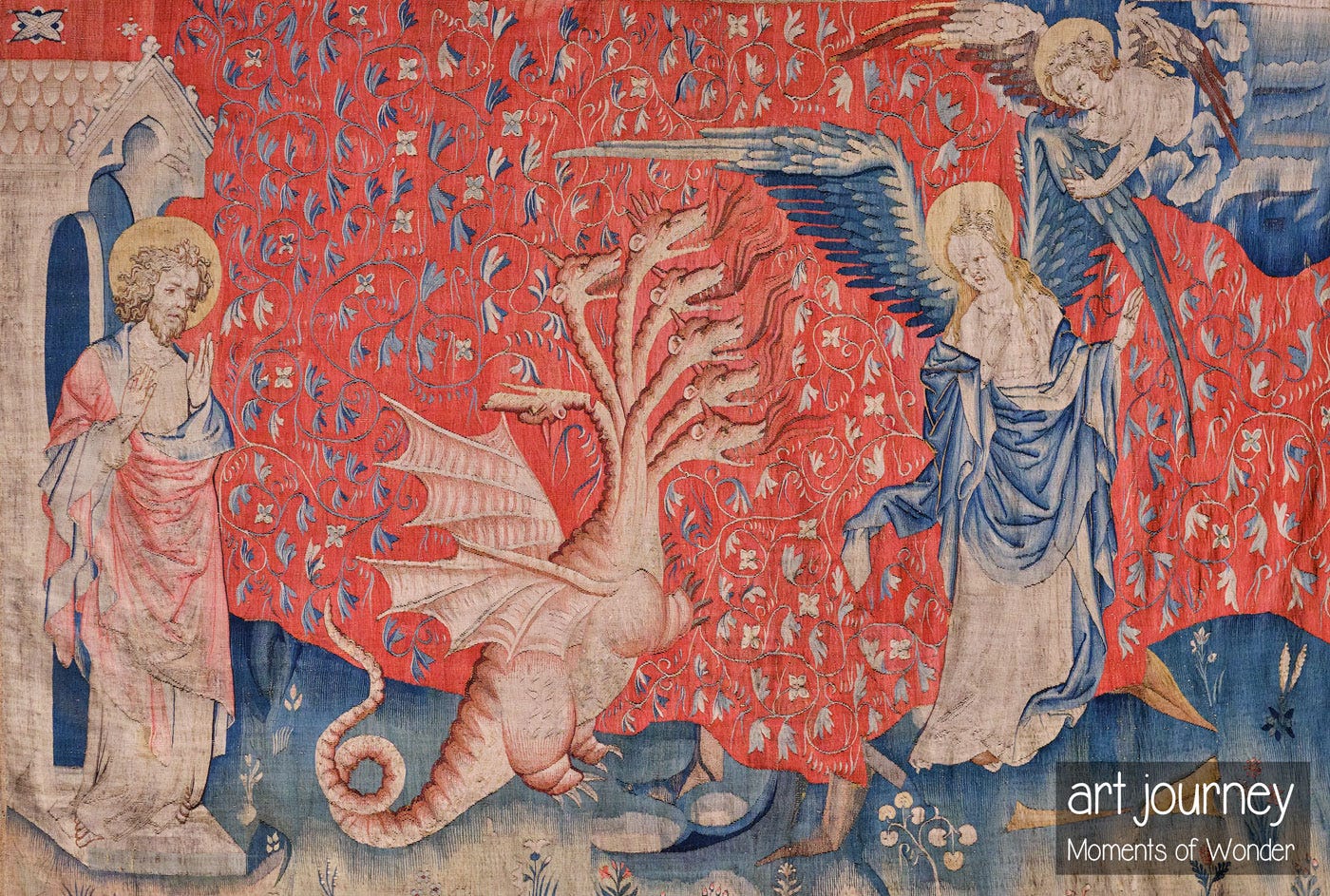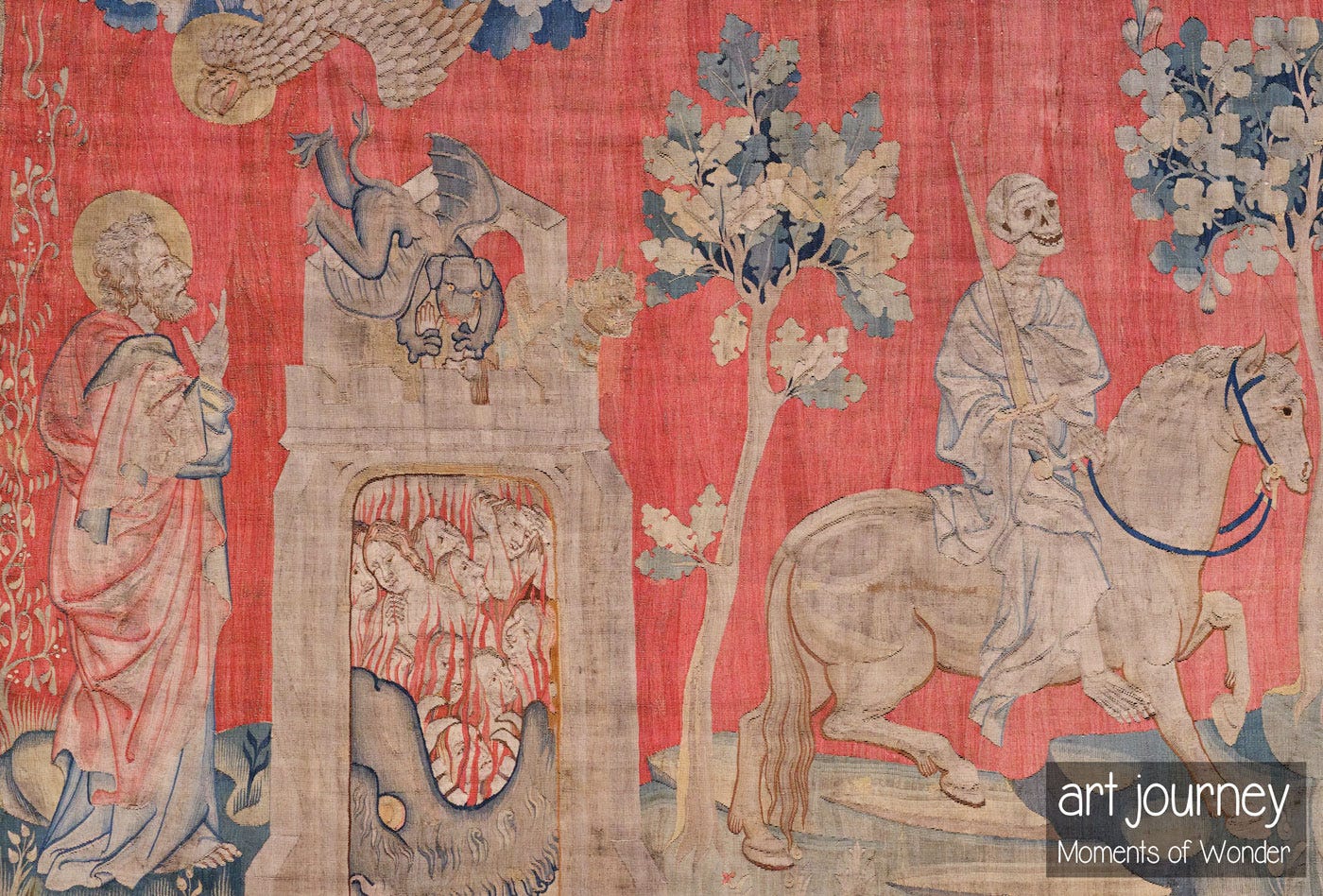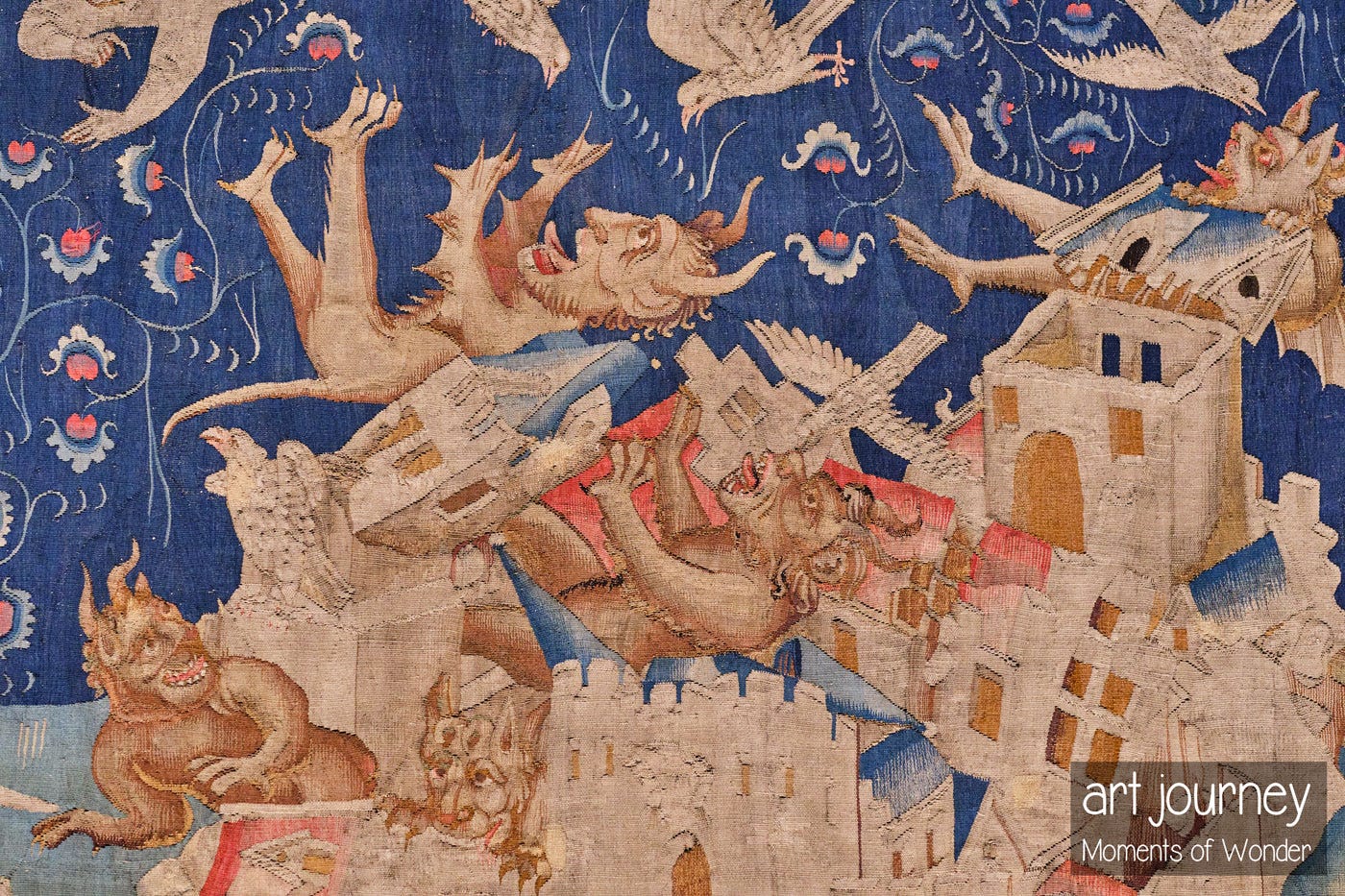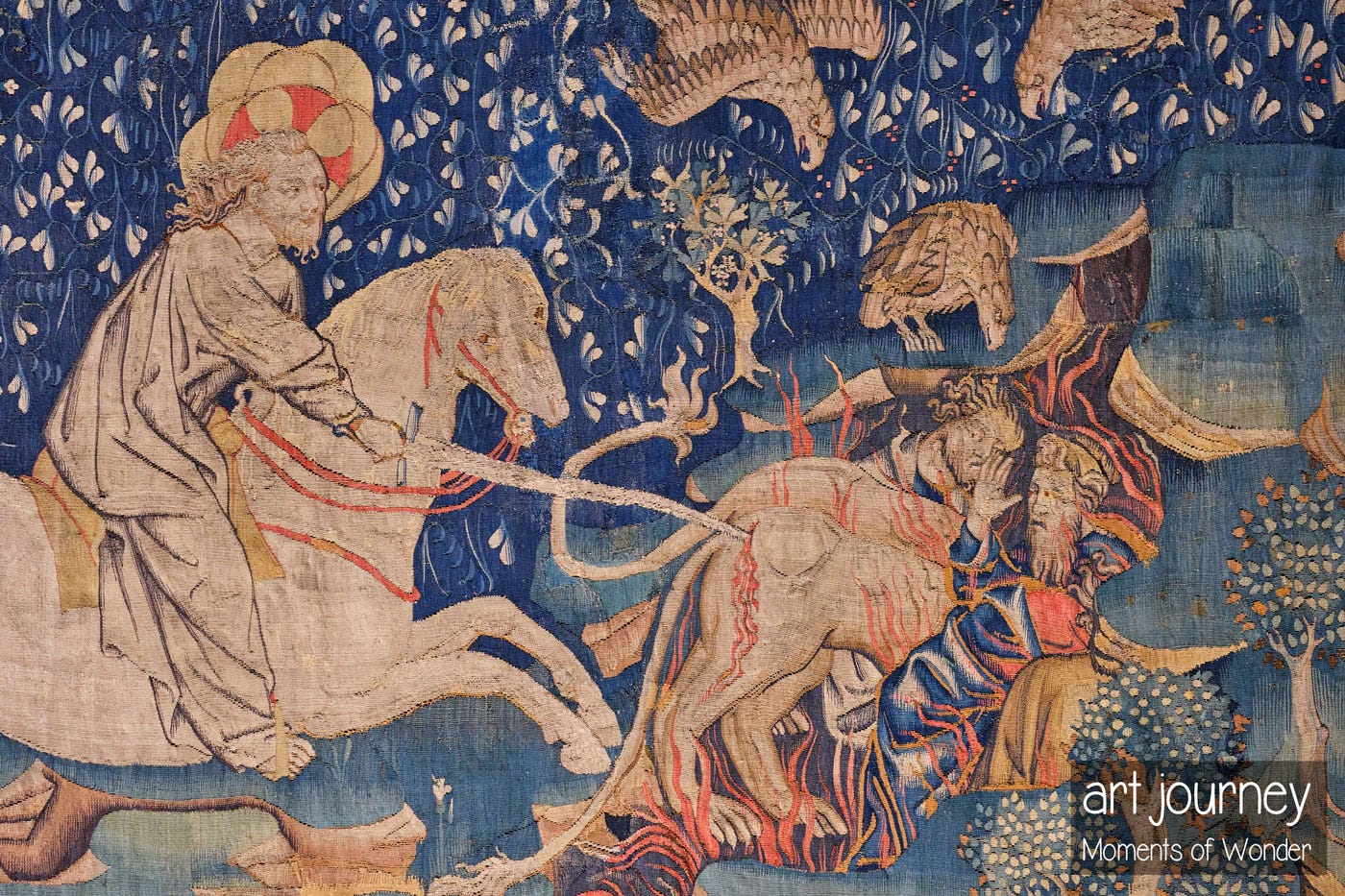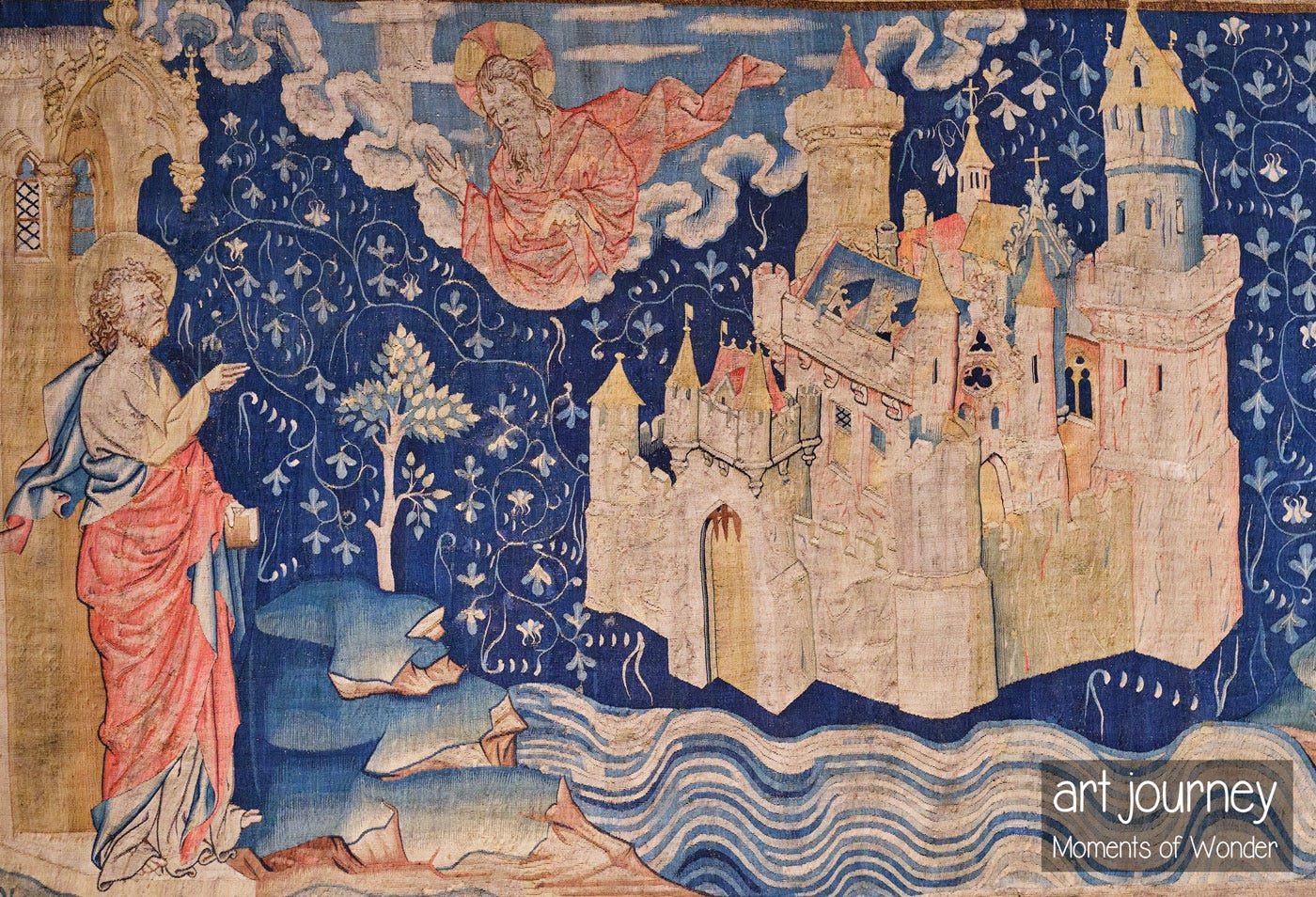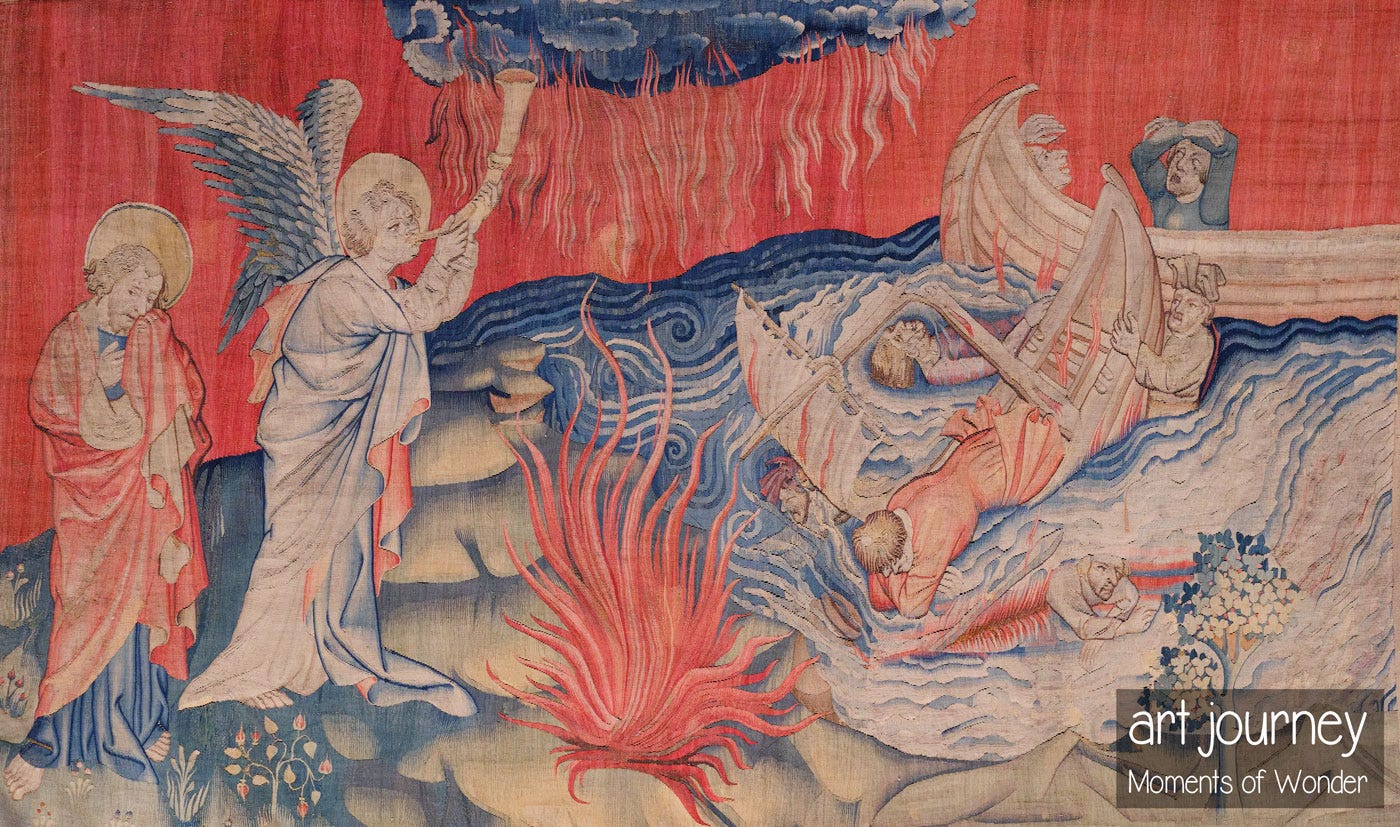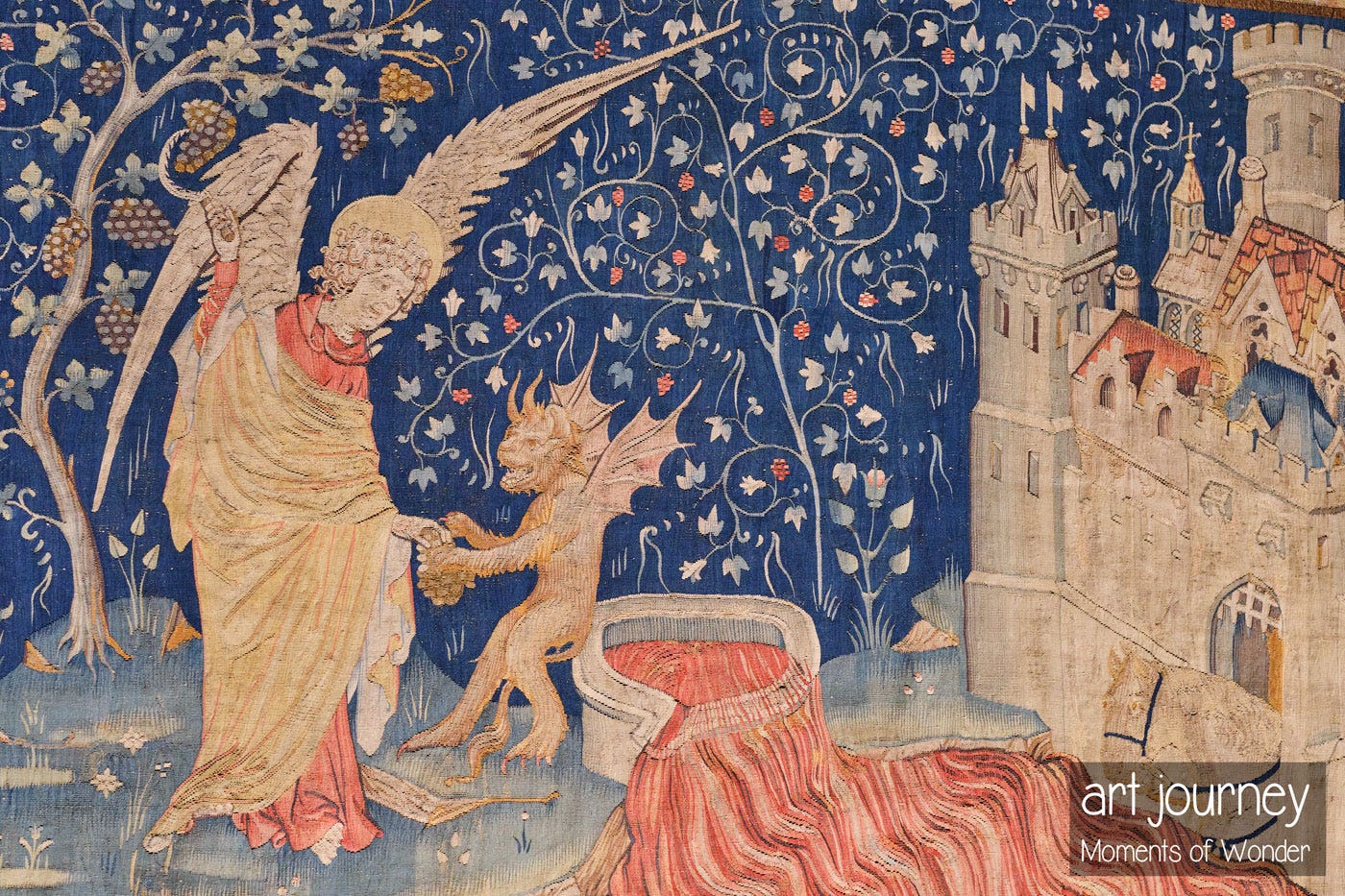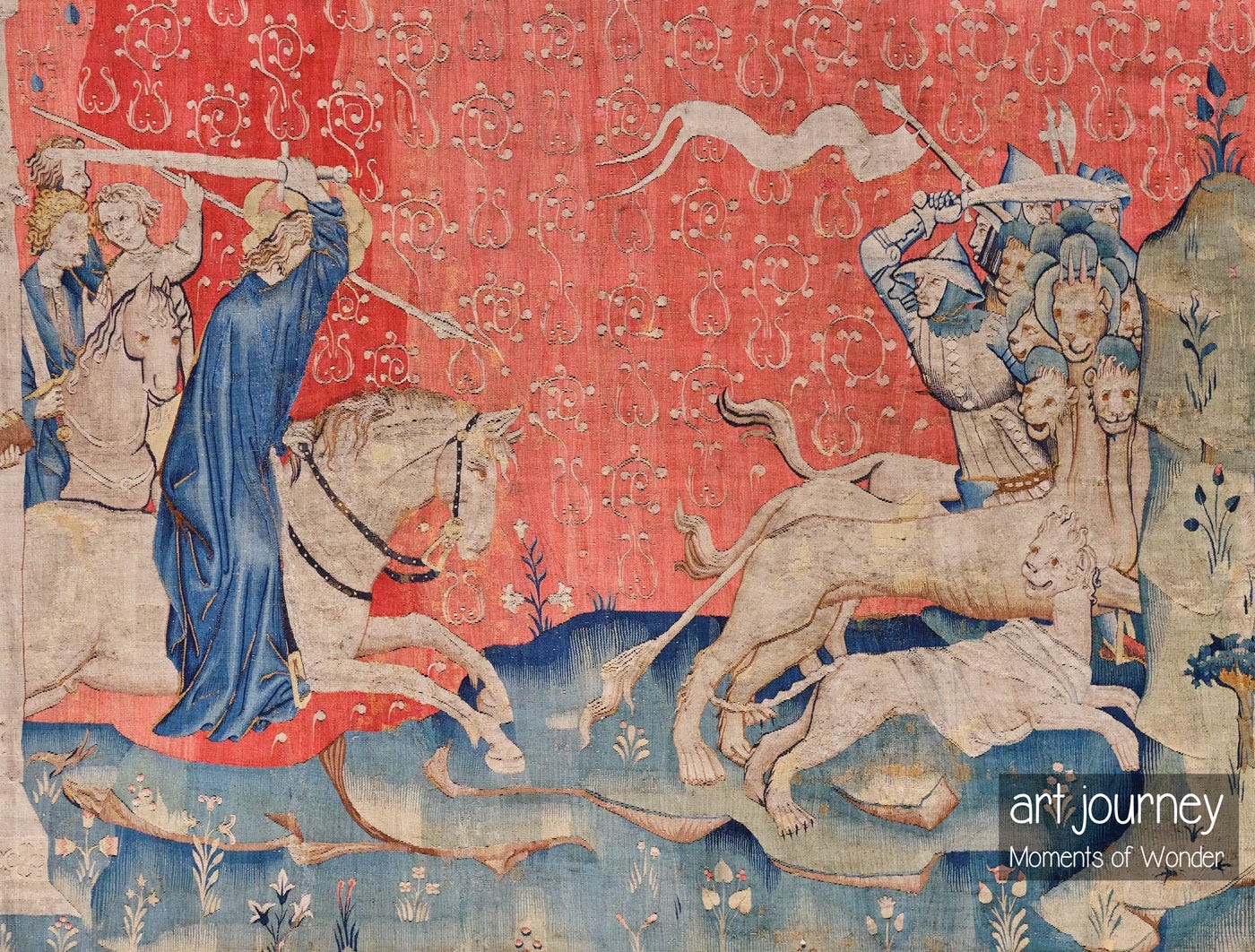The Apocalypse of Angers, the largest narrative tapestry in the world
The Sistine Chapel of the Middle Ages, the Tapestry of the Apocalypse.

Dear reader, you already know that Michelangelo’s Sistine Chapel is a world-class wonder. You probably also know about the Bayeux tapestry.
Yet, there’s another “Sistine Chapel” level tapestry—in quality, size, and rarity—you may not have heard about before.
To enjoy it, you need not worry about being crushed by the crowds and rushed toward the door. As visible here, no one will shout at you not to take photos.
It is the largest and oldest storied tapestry in the world. Like the Bayeux Tapestry, it is on UNESCO’s Memory of the World list. Unlike other World Heritage wonders, one can enjoy it alone or nearly alone.
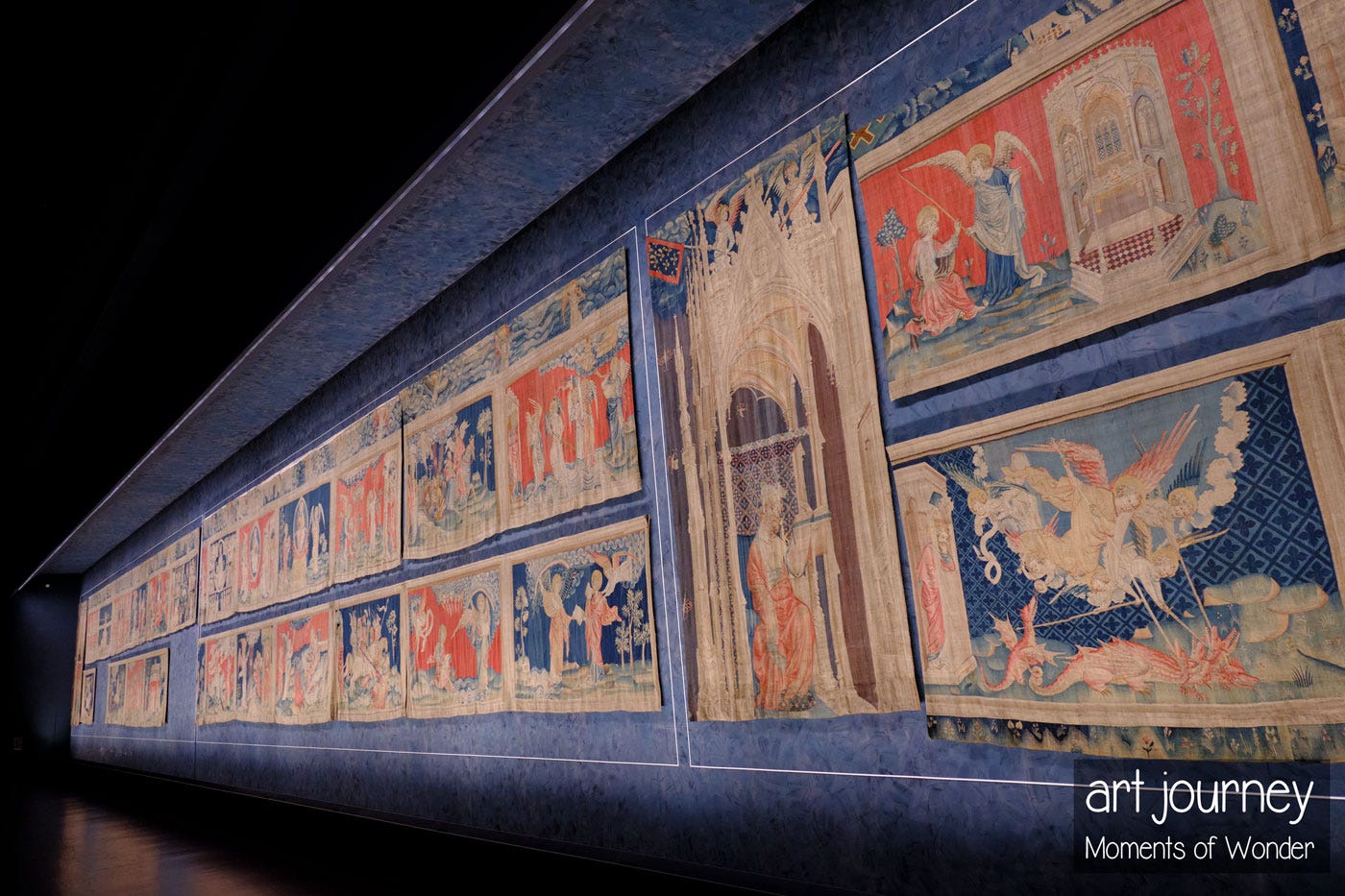
How can a unique masterpiece be overlooked? This is the story of the Apocalypse Tapestry in Angers.
A 450-foot-long illuminated manuscript

Tapestries are better understood as wall-sized, woven, illuminated manuscripts. Unfortunately, slandering the art of the Middle Ages as a 'Gothic' age of barbarity and ignorance doomed many masterpieces.
As we will discover here, while we know of hundreds of tapestries, many were used to wipe feet and protect farm animals.
A Royal painter, Jean de Bruges, designed the tapestry
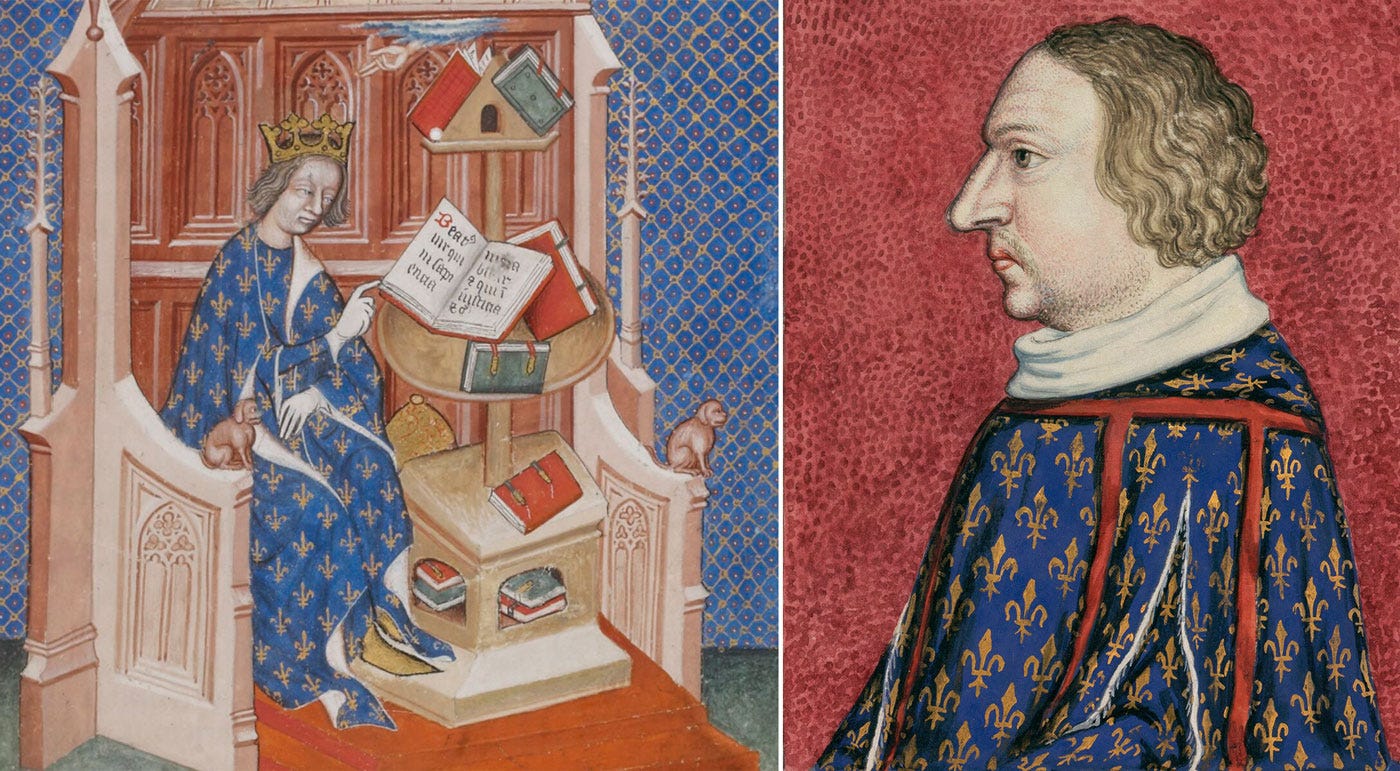
Dear reader, let us now travel to France in the 1370s. Above, left, is King Charles V in his library in the Louvre. The King was an avid book collector and held one of the most prestigious libraries of the Middle Ages.
His brother, Louis of Anjou, was himself a King—of Jerusalem and Sicily—and shared a deep love for precious books and artworks. It is known that Louis borrowed the Apocalypse manuscript illustrated above from his brother's library.
Louis employed the King's painter to paint a gigantic painting 450 feet long. The artist's name is Jean de Bruges, Painter to the King.
Although, unfortunately, we know little about the genius, I translated for you a document where the King rewarded his painter:
In consideration for the good and agreeable services that our beloved Jehan de Bondol, said of Bruges, our painter, gave us in the past, still does every day, and, we hope, will keep doing in the future...
Crucially, we even have the name of the Parisian weaver, Robert Poisson. Before discussing their achievement further, let's try to make sense of the tapestry's size.
Like a Royal Library manuscript, but so large it could not fit indoors
Dear reader, it isn't easy to comprehend the size of this series of tapestries. The set is so immense that it could not fit inside Louis of Anjou's castle! Imagine a painting that is 140 meters—450 ft—long.
What likely happened is they were rolled up and only displayed outside on special occasions. In 1400, it was shown for a wedding when a witness stated:
No one can describe nor tell these tapestries' value, beauty, and lavishness.
The tapestry was later given to Anger's cathedral. Today, scenes of the horsemen of the Apocalypse, seven-headed dragons, and monsters seem to be the stuff of nightmares.
Why the Apocalypse?
The word Apocalypse doesn't mean destruction; it means revelation. Yet, being French in the 1300s would inevitably have looked like an age of destruction.
The Black Death plague of 1348 wiped out one-third of the European population, and a terrified populace took out their fears on innocent Jews.
Aside from plague and famine, there were the horrors of the Hundred Years War. The battle between Evil and Good depicted is a thinly veiled reference to the war between the English and the French.
The figures of soldiers are straight from the battlefield, and this tapestry was paid for by a Duke during the Hundred Years' War, so it is no wonder that it had a political message.
The Apocalypse tapestry, a masterpiece with a happy ending
The battle between Good and Evil ends in a New Jerusalem, the victory of Good against Evil, which is why this tapestry needs to be understood as a message of hope.
The largest wall hanging of the Middle Ages, woven in only nine years
Records indicate that all 450 feet of the tapestry were woven in only about nine years, between 1373 and 1382.
Today, in Paris, high-quality tapestries are still created at the Gobelins Manufacture. I will confess, dear reader, that I never really appreciated tapestries until I went there to see how they are made.
At the Gobelins, a single tapestry adapted from a painting may take half a dozen years to complete. In Paris, in the 1370s, the weaver Robert Poisson and his workshop created a masterpiece of 450 ft in only nine years.
Barely visible today, sections were also enhanced with gilded silver wires. A second set of Apocalypse tapestries was made using 50 kg of gold, but it accidentally burned in the 1700s.
This leads us to the odds of survival of tapestries, particularly one so large.
A masterpiece used to protect farm animals and trees from the harshness of winter
The Apocalypse Tapestry hung on special occasions on the walls of Anger's cathedral. But it slowly faded, and the Middle Ages started to be tarred as an age of superstition and ignorance.
The seven-headed monsters did not help. The cathedral’s clergy complained and, in 1782, tried to sell the entire set. Even at a very low price, no one wanted it. That is when the unthinkable happened.
For the next fifty years, the tapestry was cut off, piece by piece, to be used as carpets, to protect fruit trees and greenhouses, to cover horses, or to fill in cracks in walls.
One-third of the masterpiece was destroyed until a clergyman, Louis-François Joubert, made it his life's mission to save the tapestry and try to recover all its scattered fragments.
This is why, dear reader, you may forgive the faded state of this masterpiece, the fact that so much is missing, and understand the need for a low-light display to avoid further damage.
As illustrated previously, Cloisters in New York holds a magnificent Unicorn series, and the musée Cluny in Paris holds the Lady with the Unicorn. Travelers come from afar to admire the Bayeux Tapestry.
This is not a competition, but the Apocalypse Tapestry is in a different league, which is why we may consider it the "Sistine Chapel" of the Middle Ages.
Like in Rome, it is not the size but the quality that awes viewers. The video below gives you a sense of the size of the room. The chairs are there for viewers to try and take it in.
Hence, before you get a chance to see it in real life, I trust that this story and images brought you a Moment of Wonder.
Apocalypse Tapestry of Angers Unesco listing.
La tapisserie de l'Apocalypse : un chef-d'œuvre unique au monde.


